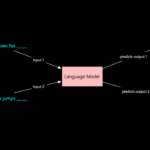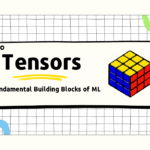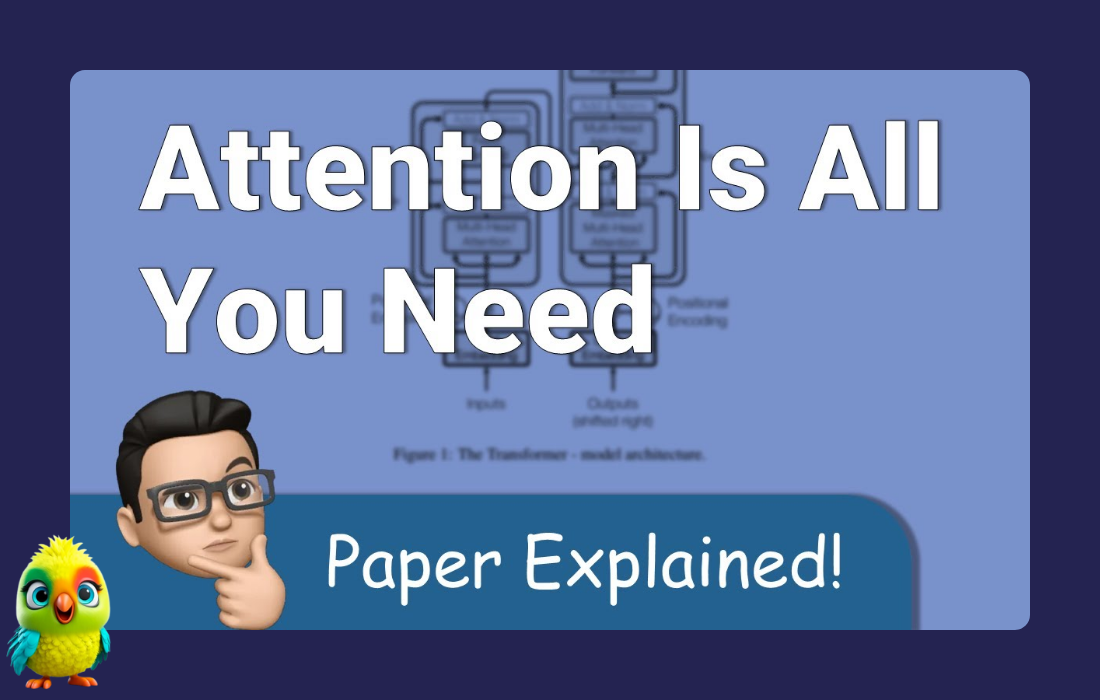These examples will illustrate key concepts and provide insights into the mathematical computations involved in each area in Linear Algebra.
Linear Algebra Topics – Decoded with Examples and Calculations
1. Linear Equations
A linear equation is an equation involving a linear combination of variables. The standard form for one linear equation with \(n\) variables is:
\[
a_1 x_1 + a_2 x_2 + \dots + a_n x_n = b,
\]
where \(a_1, a_2, \dots, a_n\) are constants and \(x_1, x_2, \dots, x_n\) are variables.
Example: Solve the system of equations:
\[
\begin{aligned}
x + 2y – z &= 3, \\
2x – y + 3z &= 7, \\
3x + y + 2z &= 10.
\end{aligned}
\]
Use Gaussian elimination to solve the system. We convert this system to its augmented matrix form:
\[
\begin{pmatrix}
1 & 2 & -1 & 3 \\
2 & -1 & 3 & 7 \\
3 & 1 & 2 & 10
\end{pmatrix}
\]
After performing row operations to get it into row echelon form and solving, we find:
\[
x = 2, \quad y = 1, \quad z = 0.
\]
2. Vector Spaces
A vector space is a set of vectors where addition and scalar multiplication are defined and satisfy certain properties (closure under addition, existence of an additive identity, etc.).
Example: Consider the set \(V = \{ (x, y) \in \mathbb{R}^2 : x + y = 0 \}\). Is this a subspace of \(\mathbb{R}^2\)?
1. Zero vector: The zero vector \((0, 0)\) is in \(V\) because \(0 + 0 = 0\).
2. Closure under addition: If \(u = (x_1, y_1)\) and \(v = (x_2, y_2)\) are in \(V\), then \(x_1 + y_1 = 0\) and \(x_2 + y_2 = 0\). Their sum is \(u + v = (x_1 + x_2, y_1 + y_2)\), and \( (x_1 + x_2) + (y_1 + y_2) = 0 \), so \(u + v \in V\).
3. Closure under scalar multiplication: If \(c\) is a scalar and \(u = (x, y)\) is in \(V\), then \(c(x + y) = c(0) = 0\), so \(c \cdot u \in V\).
Therefore, \(V\) is a subspace.
3. Linear Transformations
A linear transformation \(T: V \to W\) between two vector spaces \(V\) and \(W\) is a function that satisfies:
1. \(T(u + v) = T(u) + T(v)\) for all \(u, v \in V\),
2. \(T(c \cdot u) = c \cdot T(u)\) for all scalars \(c\).
Example: Let \(T: \mathbb{R}^2 \to \mathbb{R}^2\) be defined by \(T(x, y) = (x + 2y, 3x – y)\).
To verify if this is a linear transformation, check the two properties:
1. Additivity: For vectors \(u = (x_1, y_1)\) and \(v = (x_2, y_2)\),
\[
T(u + v) = T((x_1 + x_2, y_1 + y_2)) = (x_1 + x_2 + 2(y_1 + y_2), 3(x_1 + x_2) – (y_1 + y_2)),
\]
which simplifies to:
\[
T(u + v) = (x_1 + 2y_1 + x_2 + 2y_2, 3x_1 + 3x_2 – y_1 – y_2) = T(u) + T(v).
\]
2. Homogeneity: For scalar \(c\) and vector \(u = (x, y)\),
\[
T(c \cdot u) = T(c \cdot (x, y)) = (c \cdot x + 2(c \cdot y), 3(c \cdot x) – c \cdot y) = c \cdot T(u).
\]
Thus, \(T\) is a linear transformation.
4. Eigenvalues and Eigenvectors
An eigenvector of a matrix \(A\) is a nonzero vector \(v\) such that:
\[
A \cdot v = \lambda \cdot v,
\]
where \(\lambda\) is the corresponding eigenvalue.
Example: Find the eigenvalues and eigenvectors of:
\[
A = \begin{pmatrix} 4 & 1 \\ 2 & 3 \end{pmatrix}.
\]
1. Find the characteristic equation:
\[
\text{det}(A – \lambda I) = \text{det}\begin{pmatrix} 4 – \lambda & 1 \\ 2 & 3 – \lambda \end{pmatrix} = (4 – \lambda)(3 – \lambda) – 2.
\]
Simplifying:
\[
\lambda^2 – 7\lambda + 10 = 0.
\]
The eigenvalues are \(\lambda_1 = 5\) and \(\lambda_2 = 2\).
2. Find the eigenvectors for \(\lambda_1 = 5\):
Solve:
\[
\begin{pmatrix} -1 & 1 \\ 2 & -2 \end{pmatrix} \begin{pmatrix} v_1 \\ v_2 \end{pmatrix} = 0.
\]
This gives \(v_1 = v_2\), so the eigenvector is \(v = \begin{pmatrix} 1 \\ 1 \end{pmatrix}\).
5. Matrices
A matrix is a rectangular array of numbers, and operations such as addition, multiplication, and finding the determinant can be performed on matrices.
Example: Compute the product of two matrices:
\[
A = \begin{pmatrix} 1 & 2 \\ 3 & 4 \end{pmatrix}, \quad B = \begin{pmatrix} 5 & 6 \\ 7 & 8 \end{pmatrix}.
\]
The matrix product \(A \cdot B\) is:
\[
A \cdot B = \begin{pmatrix} 1 & 2 \\ 3 & 4 \end{pmatrix} \cdot \begin{pmatrix} 5 & 6 \\ 7 & 8 \end{pmatrix} = \begin{pmatrix} 1\cdot5 + 2\cdot7 & 1\cdot6 + 2\cdot8 \\ 3\cdot5 + 4\cdot7 & 3\cdot6 + 4\cdot8 \end{pmatrix} = \begin{pmatrix} 19 & 22 \\ 43 & 50 \end{pmatrix}.
\]
Read more: kncmap
6. Matrix Inverses
The inverse of a matrix \(A\) is denoted \(A^{-1}\) and satisfies:
\[
A \cdot A^{-1} = A^{-1} \cdot A = I,
\]
where \(I\) is the identity matrix.
Example: Find the inverse of:
\[
A = \begin{pmatrix} 1 & 2 \\ 3 & 4 \end{pmatrix}.
\]
1. Compute the determinant of \(A\):
\[
\text{det}(A) = (1 \times 4) – (2 \times 3) = 4 – 6 = -2.
\]
2. Use the formula for the inverse:
\[
A^{-1} = \frac{1}{\text{det}(A)} \begin{pmatrix} d & -b \\ -c & a \end{pmatrix} = \frac{1}{-2} \begin{pmatrix} 4 & -2 \\ -3 & 1 \end{pmatrix} = \begin{pmatrix} -2 & 1 \\ 1.5 & -0.5 \end{pmatrix}.
\]
Read more: kncmap
7. Determinants
The determinant of a square matrix is a scalar value that can be computed from its elements. It is
used to determine if a matrix is invertible and to find eigenvalues.
Example: Calculate the determinant of:
\[
A = \begin{pmatrix} 2 & 3 \\ 5 & 7 \end{pmatrix}.
\]
The determinant is:
\[
\text{det}(A) = (2 \times 7) – (3 \times 5) = 14 – 15 = -1.
\]
Read more: kncmap
8. Inner Product Spaces
An inner product space is a vector space with an additional structure called the inner product. The inner product of two vectors \(u\) and \(v\) in \(\mathbb{R}^n\) is defined as:
\[
\langle u, v \rangle = u_1v_1 + u_2v_2 + \dots + u_nv_n.
\]
Example: Compute the inner product of \(u = (1, 2)\) and \(v = (3, 4)\):
\[
\langle u, v \rangle = (1)(3) + (2)(4) = 3 + 8 = 11.
\]
9. Linear Independence
Vectors \(v_1, v_2, \dots, v_n\) are said to be **linearly independent** if no nontrivial linear combination of them equals the zero vector.
Example: Check if the vectors \(v_1 = (1, 2)\) and \(v_2 = (2, 4)\) are linearly independent.
To check linear independence, solve:
\[
c_1 v_1 + c_2 v_2 = 0.
\]
This gives the system:
\[
c_1(1, 2) + c_2(2, 4) = (0, 0).
\]
Solving this system, we find \(c_1 = 0\) and \(c_2 = 0\). Since the only solution is the trivial solution, \(v_1\) and \(v_2\) are linearly dependent.
Read more: kncmap
10. Matrix Congruence
Matrices \(A\) and \(B\) are said to be congruent if there exists an invertible matrix \(P\) such that:
\[
A = P^T B P.
\]
Read more: kncmap
11. Vectors
A vector is an element of a vector space. It has both magnitude and direction.
Example: Let \(u = (1, 2)\) and \(v = (3, 4)\). The sum of the vectors is:
\[
u + v = (1 + 3, 2 + 4) = (4, 6).
\]
The scalar multiplication of \(u\) by 2 is:
\[
2 \cdot u = (2 \cdot 1, 2 \cdot 2) = (2, 4).
\]
12. Euclidean Vector Spaces
The Euclidean space \(\mathbb{R}^n\) is a space of \(n\)-dimensional vectors with the standard dot product as the inner product.
Example: Find the dot product of vectors \(u = (1, 2, 3)\) and \(v = (4, -5, 6)\):
\[
\langle u, v \rangle = (1)(4) + (2)(-5) + (3)(6) = 4 – 10 + 18 = 12.
\]
Read more: kncmap
13. Gram-Schmidt Process
The Gram-Schmidt process is a method for orthonormalizing a set of vectors in an inner product space.
Example: Given two linearly independent vectors \(v_1 = (1, 0)\) and \(v_2 = (1, 1)\), use the Gram-Schmidt process to construct an orthonormal set:
1. \(u_1 = v_1 = (1, 0)\).
2. Project \(v_2\) onto \(u_1\):
\[
\text{proj}_{u_1}v_2 = \frac{\langle v_2, u_1 \rangle}{\langle u_1, u_1 \rangle} u_1 = \frac{1}{1}(1, 0) = (1, 0).
\]
3. Subtract the projection from \(v_2\) to get \(u_2\):
\[
u_2 = v_2 – \text{proj}_{u_1} v_2 = (1, 1) – (1, 0) = (0, 1).
\]
4. Normalize \(u_1\) and \(u_2\) to get the orthonormal vectors:
\[
e_1 = \frac{u_1}{\|u_1\|} = (1, 0), \quad e_2 = \frac{u_2}{\|u_2\|} = (0, 1).
\]
Thus, the orthonormal set is \(\{(1, 0), (0, 1)\}\).
Read more: kncmap
14. Orthogonal Matrices
A matrix \(Q\) is orthogonal if its rows and columns are orthonormal vectors, i.e., \(Q^T Q = Q Q^T = I\).
Example: The matrix
\[
Q = \begin{pmatrix} \cos \theta & -\sin \theta \\ \sin \theta & \cos \theta \end{pmatrix}
\]
is orthogonal because:
\[
Q^T Q = \begin{pmatrix} \cos \theta & \sin \theta \\ -\sin \theta & \cos \theta \end{pmatrix} \begin{pmatrix} \cos \theta & -\sin \theta \\ \sin \theta & \cos \theta \end{pmatrix} = I.
\]
Read more: kncmap
15. Singular Value Decomposition (SVD)
The Singular Value Decomposition (SVD) of a matrix \(A\) is a factorization of \(A\) as:
\[
A = U \Sigma V^T,
\]
where \(U\) and \(V\) are orthogonal matrices and \(\Sigma\) is a diagonal matrix containing the singular values of \(A\).
Read more: kncmap
16. Solving Systems of Equations with Matrices
To solve a system of linear equations \(Ax = b\), we can use matrix inversion or Gaussian elimination.
Read more: kncmap
17. Coordinates
Coordinates represent the position of a point in a vector space with respect to a given basis.
Read more: kncmap
18. Dimension and Subspaces
The dimension of a vector space is the number of vectors in any basis of the space. A subspace is a subset of a vector space that is itself a vector space.
Read more: kncmap
19. Matrix Exponential
The matrix exponential is defined as:
\[
e^A = I + A + \frac{A^2}{2!} + \frac{A^3}{3!} + \dots
\]
It is used in differential equations and systems theory.
Read more: kncmap
20. Orthogonal Projections
An orthogonal projection of a vector \(v\) onto a subspace \(W\) is the closest vector in \(W\) to \(v\).
Read more: kncmap
21. Projections
A projection is a linear transformation that maps vectors onto a subspace.
Read more: kncmap
22. Subspaces
A subspace is a subset of a vector space that is itself a vector space under the same operations as the original space.
Read more: kncmap
23. Addition, Subtraction, and Scalar Multiplications
These are the basic operations in a vector space, where addition and scalar multiplication follow specific rules.
Read more: kncmap
24. Computations
These involve performing operations such as matrix multiplication, finding eigenvalues, and solving systems of equations using techniques like Gaussian elimination.
Read more: kncmap






















